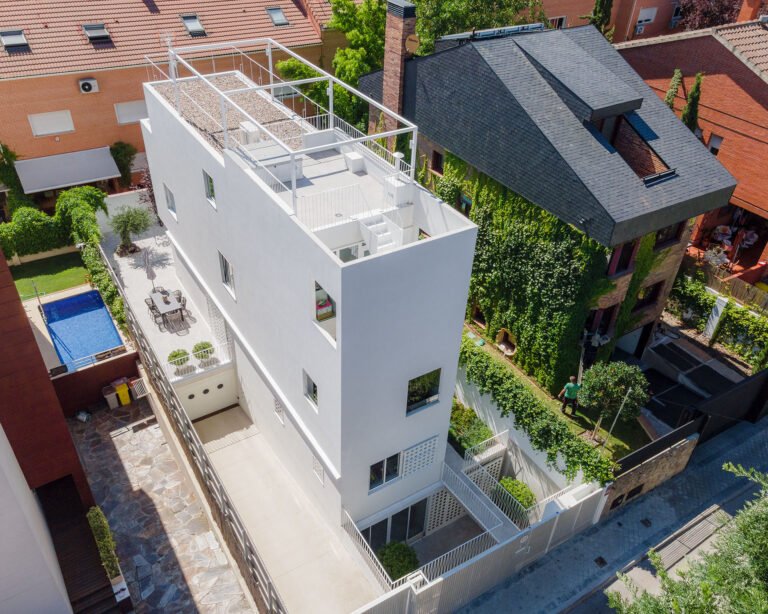House in a Meadow / Staruń Wanik Architects
House in a Meadow / Staruń Wanik Architects


Text description provided by the architects. The building is located in southwestern Poland in the village near Opole. The progressive expansion of the city has resulted in the intensive urbanization of suburban villages that have already become part of suburbs of Opole. The plot of land which the building was developed on is located on land that was originally meadows and pastures surrounding the compact village of Malina. The location of the designed building on an open, flat area, clearly sidelined from the existing village buildings, prompted thoughts about the building’s correspondence with such an environment.



The lack of existing clear environmental stimuli interacting with the planned development was decisive for the user to focus on the central point of the site rather than further frames and perspectives. The proposed spatial solution, instead of reacting to external factors which there are few of at this location, focuses on the building and its immediate surroundings. It is the building that sends signals to the outside, not the other way around, through the proper composition of its blocks.


The stated goal was achieved by clearly delineating the closest, relevant space around the house for the user. By elevating a section of the plot above the level of the surrounding terrain, the most important location has been defined. A composition of three solids constituting a house was set on the resulting elevation. The blocks are varied in height and staggered in relation to each other. Thus, two independent spaces with different functions have been obtained – OPEN and CLOSED. The first is the OPEN space in front of the entrance to the building which is open to the street and neighboring lots. The second space is a CLOSED garden area. In the southeastern part, the composition of the inner garden is closed with a utility room. The added element of composition makes it difficult to freely view this part of the garden from the outside. On the street side, the location of the building is defined by the building line. In this part of the plot, the fence line was located in the face of the elevation freeing up the area in front of the building.


The building was constructed in the Silesian village. The predominant type of development in this locality is compact farm buildings. The designed house was built in a meadow. It is physically located outside the historic fabric of post-German buildings characteristic of the area. Therefore, the proposed form and aesthetic solutions of the building do not literally imitate the original development, but draw on its patterns. The building as a premise, the break-up of the massing, the pitched roof and the finishing materials are a discreet continuation of the traditions. Stone and wood were used to finish the facade. The use of limestone-inspired masonry on the building’s facade is due to the fact that limestone was a material commonly used in construction in the area. This is how the body of the building relates to the terrain in a natural way.







